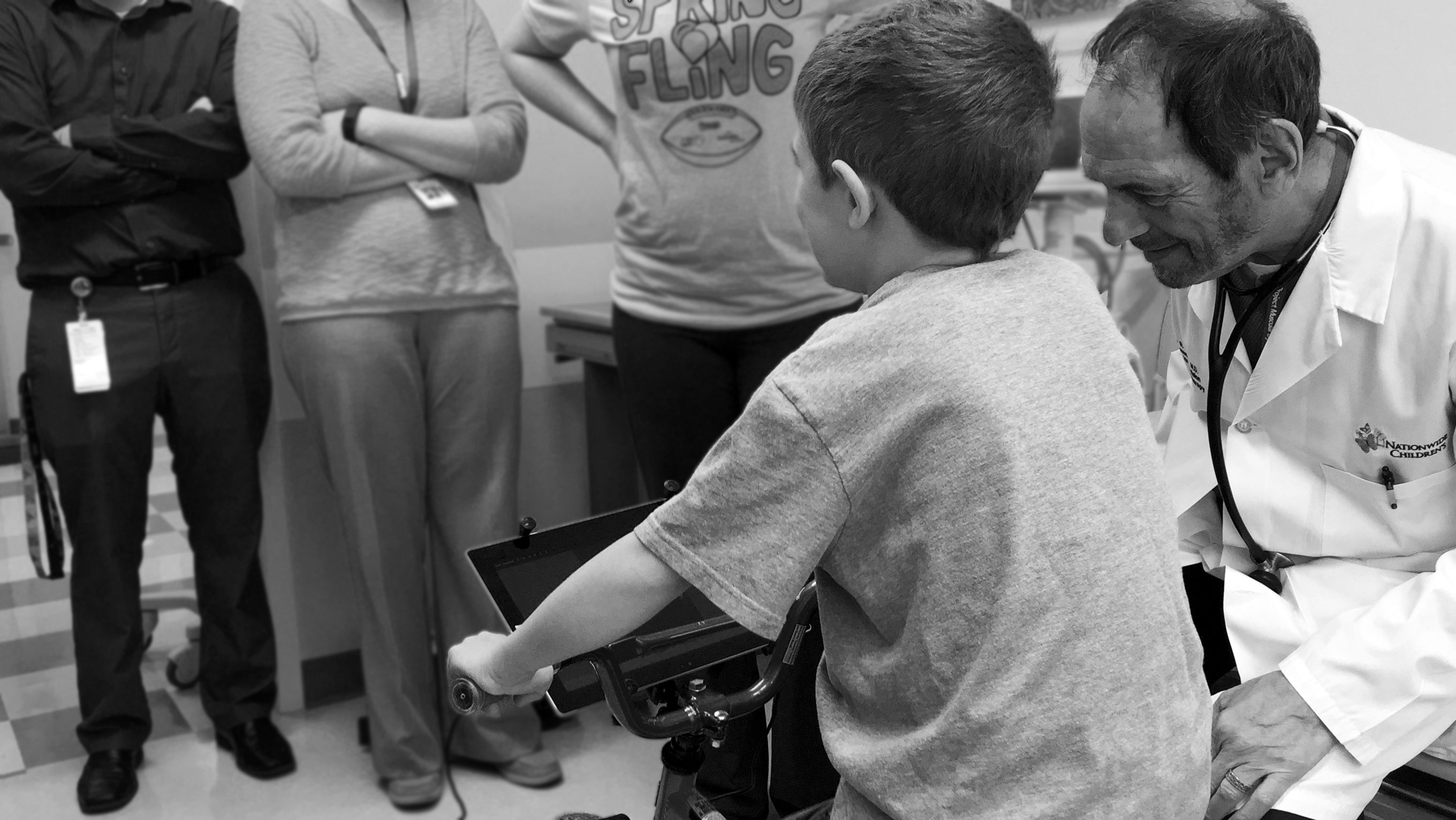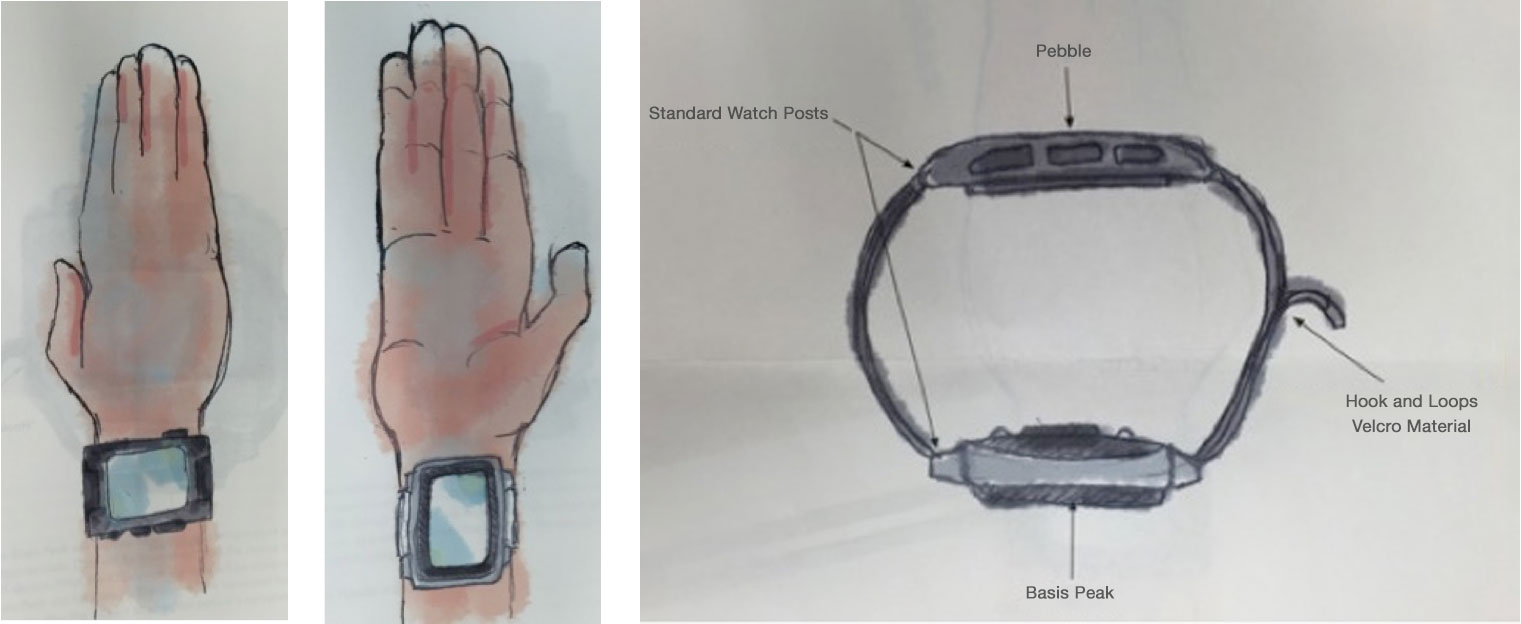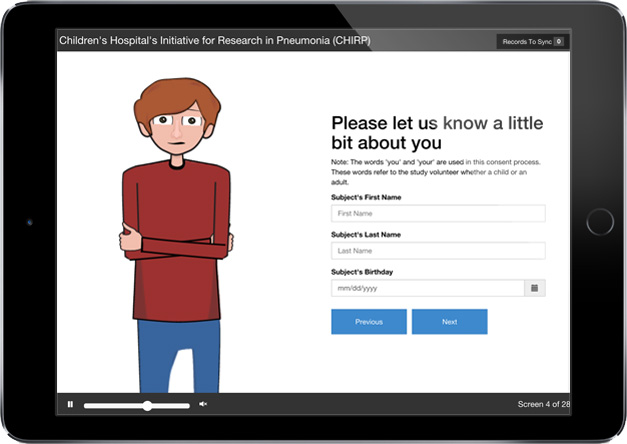Voxel Bay – Virtual Reality as Distraction Techniques
Problem
Factor replacement treatment for hemophilia is a procedure that can cause anxiety in patients. The treatment method requires that the patient remain still, which can exacerbate the anxiety.
Design Solution
Create an immersive virtual environment that overloads a patient’s perception of sensory input. Considerations of the factor replacement treatment dictated that movement must be limited; therefore, the design substituted hand controls with integrated head movement and breathing exercises that serve as the control mechanics within the game.
Project Details
The RISI Design and Technology Team designed a virtual environment that places a child into a sailboat that travels between three islands. The child must blow into a microphone in order to travel between the islands. There are also novel and fun mini-games to play on each island. Children would be given their own version of a ‘Google Cardboard’ viewing device to decorate and keep between infusions. Clinics would have a minimal investment of two or three iPod Touch devices that the virtual environment would run on.
The system is a completely interactive virtual experience that was designed and developed within the RISI R&D division. The system uses alternative modes of interaction which do not require gross body movement on the part of the user. In addition, the interactive experience provides tools that augment and add to the current distraction techniques already in use by clinical staff.
Press
- Pediatric Clinic Tests Virtual Reality for Hemophilia Patients during Procedures
- Changing the Game: Virtual Reality Distracts From Pain, Transforming the Patient Experience
Bike Game for Muscular Dystrophy Patients

Problem
Some children with Duchenne Muscular Dystrophy (DMD) have not engaged in a habitual exercise routine in their entire childhood lives to date.
Design Solution
Design an experience in which the adolescent users would participate in a bicycling exercise routine by turning the act of exercise into an interactive video game.
Project Details
The RISI Design and Technology Team designed and developed two custom games, in addition to designing and leading the effort to modify an off-the-shelf bicycle to act as a game controller. Both game designs center around a game play mechanic which requires that the child pedals the bicycle in order to progress in the game. The bicycle is also outfitted with a controller and dual-buttons embedded in the handlebar which provide additional actions in the custom games.
The bicycle is designed to be “plug and play”, and is attached to the computer which powers the games via a standard USB interface. The PC which runs the games is a Microsoft Surface Pro 3, which proved to be an ideal form-factor for this purpose. Not only is the Surface Pro a moderately powerful PC at its heart, but all auxiliary hardware, such as a monitor and speakers, are all built into the unit. Therefore, the PC could be mounted in front of the child on the bicycle’s handlebar, leading to a more portable and immersive experience.
The Design and Technology group’s bicycle game has been provided to two patients to date, with more patients in the pipeline. The first patient to receive the bicycle had not, as anticipated, previously ridden a bicycle. Through the strategy and design that was employed when creating the bicycle games and controller, this child was not only able to learn how to ride a bike within the first 10 minutes of the session, but continued exercising until being asked to stop 20 minutes later.
The Design and Technology group learned three major points during this project:
- Patient experiences are not exclusively hardware or software based, but rather a combination of the two; thus custom hardware and software combined are becoming the deliverable.
- Custom hardware development is becoming ubiquitous as custom application development; and both work best when executed in tandem.
- User-centered design reduces adoption barriers and encourages habitual use.
Seizure Detection in Patients with Epilepsy

Problem
Patients with an epilepsy diagnosis are aware that at any moment, they could have a seizure. This leads to many patients living secluded lives and unable to participate in ‘normal’ activities.
Design Solution
Work with clinicians to collect data from epileptic patients wearing smart watches. Compare that data to the current seizure monitoring gold standards to help identify data that might be leveraged to first detect and eventually predict seizures.
Project Details
The problem landscape includes unique challenges when addressing a pediatric population.
- Affordability: Is the device something that the family that includes a member with epilepsy can afford and does the cost of ownership remain affordable over time.
- Usage: The battery life for the device must allow continuous, around the clock monitoring of the patient. Therefore, it must provide a sense of security for an extended period of time, such as lasting throughout the day or overnight.
- Perception: The target demographic is school age children, and the device is only useful if the patient wears the device. Therefore, it is important that the user is comfortable wearing the device throughout a day at school. The device cannot identify the wearer as a patient with epilepsy.
The hybrid system was built using consumer grade wearable devices: a Basis Peak and Pebble smart watch. The system also includes custom software written for iOS devices and Pebble smart watch devices. The project was executed in conjunction with and with the support of Pebble. The hybrid system was built using consumer grade wearable devices: a Basis Peak and Pebble smart watch. The system also includes custom software written for iOS devices and Pebble smart watch devices. The project was executed in conjunction with and with the support of Pebble.
Enlighten – Interactive Informed Consent

Problem
In the current informed consent process, subjects are presented with a multi-page paper form that outlines the procedures and risks that they will be subjected to if they choose to participate in the study. The paper form process is tedious and unengaging.
Design Solution
Create an application to improve this process by offering a new way to engage the subject in the consent process.
Project Details
The overall goal of Enlighten is to improve the consent process, ensuring that that the subject makes an informed decision regarding their participation and that the hospital remains compliant with regulations as they pertain to consent.
- Interactive avatars are used to make the process more engaging and interactive
- Videos and games help appeal to multiple learning styles
- Content is presented in smaller sections in tandem with audio to make the consent easier to understand and to reach a broader audience
- Questions are be posed to the user to ensure comprehension
- Digital signatures/initials are captured and included in a signed consent form that will then be emailed to the subject
Enlighten is:
- Highly Interactive and educational (avatars, games, questions)
- Multi-lingual
- Created with different learning styles in mind
- Regulatory compliant
- HIPAA Compliant
- Kid friendly – designed with pediatric population in mind
